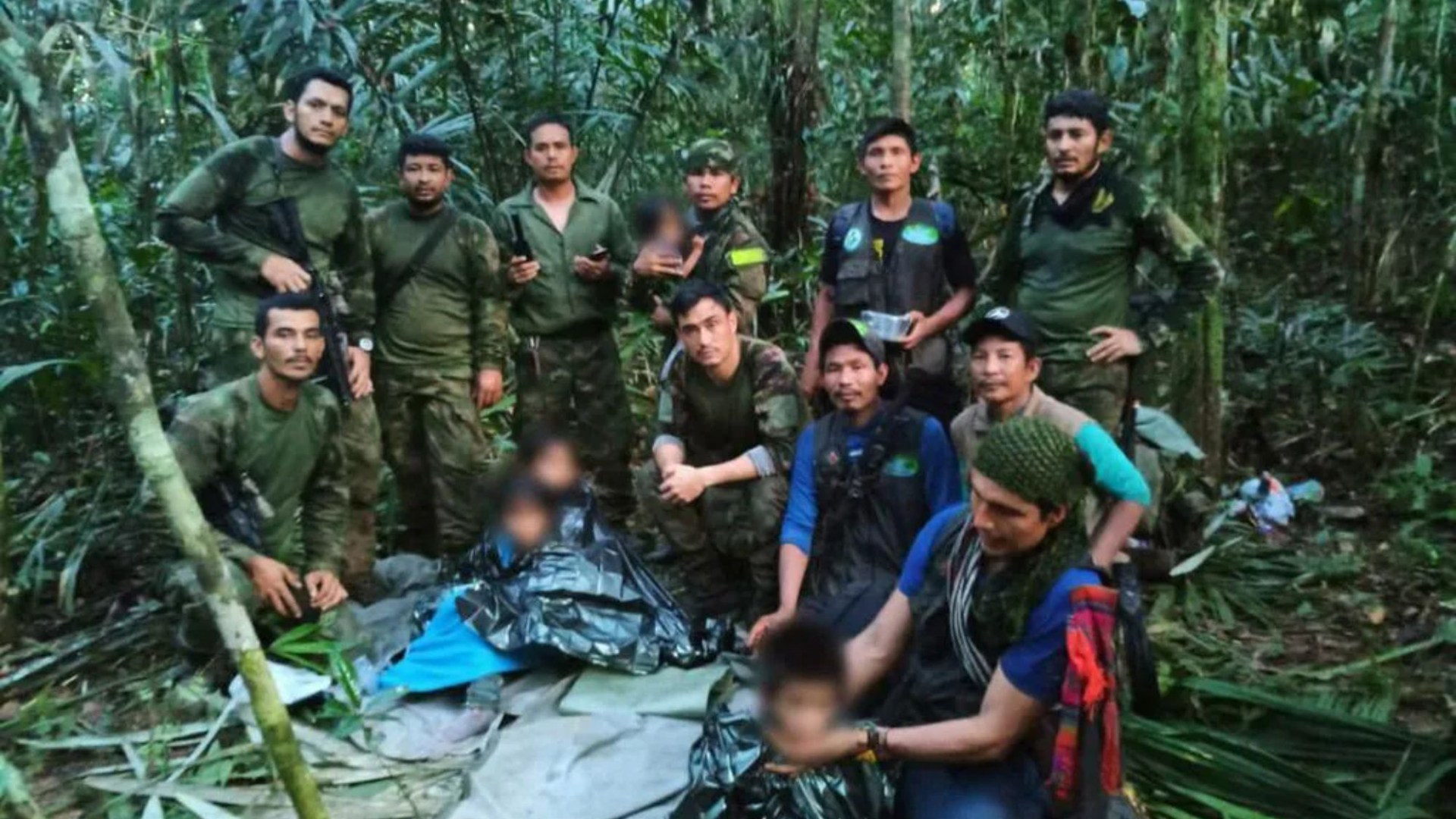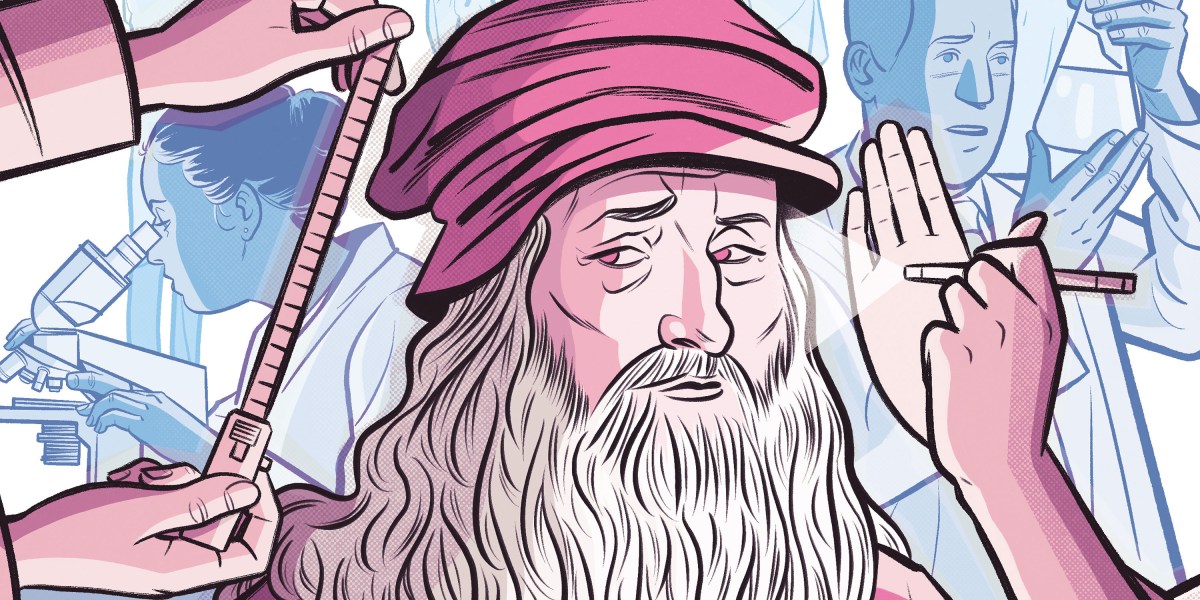HEARING her mother’s cries fade from beneath the plane wreckage, 13-year-old Lesly Jacobombaire Mucutuy knew it was now down to her to keep her younger siblings alive.
Earlier that morning, on May 1 2023, Lesly and her family had boarded a small plane from the southern Amazon town of Araracuara, Colombia.
11

11

11
It was hoped the flight, heading north to the country’s Guaviare region, would lead Lesly’s family to safety.
They were fleeing their Amazon hamlet because there were narco crime groups close by.
They had threatened Magdalena’s husband Manuel Ranoque, an indigenous leader with a dubious reputation.
Yet the turn of events that were about to unfold led them into even more danger and heartbreaking tragedy.
Alongside Lesly on the small Cessna aircraft was her mother Magdalena Mucutuy, nine-year-old sister Soleiny, 11-month-old sister Cristin and four-year-old brother Tien.
About half an hour into the flight, as the small blue and white plane soared over one of the wettest, densest and remotest areas of the Amazon, its engine failed.
There was a mayday alert to air traffic control. Not long after, radio contact was lost.
When news of a crash hit the news in Colombia, everyone wanted to know whether the children and their mother had survived it.
The family’s fate would soon become a national obsession.
Lesly’s account of what happened, which formed part of Colombia’s official investigation, is retold in a new Netflix documentary, The Lost Children, via a translator.
“After the accident, I don’t know how long I was unconscious for,” Lesly says.
“When I woke up there was a lot of blood and I had a large cut on my left side, which was very painful.
“I could hear my siblings crying and crying. My mother was making noises and she stopped. Maybe if I had woken up earlier, I could have saved her.”
Magdalena’s grieving sister, Yeritza Mucutuy, tells documentary-makers: “I cried so much when I heard the news about my sister, Magdalena, and her children. They were like my children.
“She [Magadalena] was always so cheerful. It was like she didn’t even know what sadness was. She was more like a mother to me. We were very close.”

11

11
Colombian Special Forces were deployed to the region the Cessna had last been traced to.
Members of the indigenous Huitoto group, more used to the jungle than the military, started their own search.
They combed the forest alongside Magdalena’s husband Manuel Ranoque – biological father to her two youngest children.
The inhospitable jungle terrain was almost impossible to navigate. The rain pelted down 16 hours a day.
There were no roads and the meandering rivers teemed with predators, including piranhas and anacondas.
I got all the strength I had when I dragged myself on my knees. I did that for the first 20 days. We were lost. I knew that I just had to keep going
Lesly Jacobombaire Mucutuy
The documentary retraces the mammoth search effort, using real-time footage from Amazon search teams and interviews with key members.
The hunt was made even more perilous because of the risk searchers would come face-to-face with geurilla fighters, terrorists operating in the area and financed by drug trafficking operations.
Sign of life
Sixteen days into their search, some of the Huitoto finally had a breakthrough.
They found the mangled Cessna plane, clinging vertically to the thick jungle undergrowth. Plane debris was strewn across the jungle floor.
When Special Forces were drafted in to identify the bodies they confirmed mother Magdalena, 33, was dead, alongside the pilot and another male passenger.
Yet it soon became clear that the children had miraculously escaped.
Special Forces Captain “Legionario”, tasked with retrieving the bodies, explains: “All of a sudden my sergeant said to me, ‘Captain, I’ve found a baby’s bottle.’

11

11
“A bottle in the jungle? Unbelievable. I was shocked. After that, we came across some wild fruit, passionfruit. It had human bite marks on it. As we continued on, we found a refuge [hiding place].”
Searchers also found footprints and, later, even a soiled nappy.
The children appeared to be alive but for how long and where were they now?
‘Could barely walk’
As Lesly explains in her account of events, she kicked into survival mode after the crash.
She says: “I pulled my sister out from underneath my mother and I know we couldn’t stay and we had to abandon the plane so we could find more food and find something to drink.”
The country was gripped by news the children had survived.
Now the search took on a new lease of life, with everyone focused on finding them.
I got up and decided to leave my sisters and my brother by themselves. I started to walk away to be on my own but after 20 minutes I realised I had to go back
Lesly
The rescue mission was dubbed “Operation Hope”. The Colombian armed forces flew 150 soldiers with dogs to the area to search for the siblings.
It seemed almost inconceivable that a baby and three children could survive the elements.
Lesly soldiered on.
She says: “My leg was hurting so much and I could hardly even stand and walk at all.
“I got all the strength I had when I dragged myself on my knees.
“I did that for the first 20 days. We were lost. I knew that I just had to keep going.
“My biggest worry the whole time was keeping baby Cristin alive. I had to take care of her. I knew that she needed more food than we did.”

11

11
It was skills that Lesly had learned growing up in her Indigenous community that was key to keeping them alive.
“My mother had taught me about fruits we could eat in the jungle,” she says.
“I made a fishing rod out of what I could find. With the rod, we were able to catch some fish. We ate the fish raw. It tasted horrible.”
Race against time
Special Forces blasted a phone recording from their grandmother out over megaphones from military helicopters.
The message was simple: “Children please, if you can hear this announcement stay where you are.”
They dispatched more than 10,000 flyers that read: “Stay close to the water. Don’t move.”
“We were trying to follow the voice that we heard but it would fade,” Lesly says. “I would try to get my sisters and brother to sleep each night.
They looked scared as if they wanted to run away from us so I raised my arms… and said ‘family’
Nicolas Ordonez, volunteer rescuer
“I didn’t really sleep. One night in the jungle we almost sat on a snake. I was able to kill it with a stick.
“My brother became so weak that he could no longer stand on his own anymore. One day I dreamt that they would never find us.
“My heart was beating fast and I struggled so hard to breathe.
“I got up and decided to leave my sisters and my brother by themselves. I started to walk away to be on my own but after 20 minutes I realised I had to go back.
“I had to protect my brother and my sisters. Cristin and Tien were both very close to dying.”
Emaciated but breathing

11

11
Several weeks into the rescue the military called off the search.
The search area had narrowed but so had the hopes the children had survived.
The indigenous volunteers prepared rituals and prayed for some divine intervention.
Finally, those prayers were answered – 40 days in, a small group of indigenous volunteers, finally found the children.
Traipsing through the unforgiving terrain, volunteer Nicolas Ordonez, was the first to greet them.
He says: “I lifted up my head to see where the companions were and then I saw the kids.
“They looked scared as if they wanted to run away from us so I raised my arms… and said ‘family’.”
Close to death, the children were a shell of their former selves. They were barely able to move, emaciated… but they were still breathing.
The world’s deadliest aircraft incidents
By Josh Saunders
HERE we reveal the five deadliest airplane incidents and accidents:
5) The Ermenonville air disaster – 346 deaths
Turkish Airlines Flight 981 crashed into the Ermenonville Forrest, nine miles outside of Paris, when an incorrectly secured cargo door burst open and broke off. It caused such an explosive decompression that cables vital for controlling the aircraft were severed and the plane plummeted. All 346 passengers and 11 crew died on the day of the tragedy – March 3, 1974.
4) Saudi Flight 763 & Kazakhstan Airlines Flight 1907 – 349 deaths
The world’s deadliest mid-air collision occurred on November 12, 1996 – and killed everyone aboard both planes. It was ruled the Khazak plane’s crew caused the horror crash after failing to maintain the correct altitude. They attributed it to the crew’s poor English language skills, meaning they struggled to understand directions from air traffic control, and three separate failures in cockpit training procedures.
3) Japan Air Lines Flight 123 – 520 deaths
Just 12 minutes into the flight between Tokyo and Osaka, Japan, the Boeing 747SR-46 began to suffer problems. After a further 32 minutes, it crashed into Mount Takamaghara after the flight controls were disabled. The disaster on August 12, 1985, initially had up to 50 survivors but many died while awaiting rescue due to serious injuries. The plane had structural failure caused by a faulty repair seven years earlier, which led to rapid decompression that ripped off part of the tail.
2) The Tenerife airport disaster – 583 deaths
At Tenerife North Airport, a terrifying collision occurred that claimed the lives of passengers on two Boeing 747s on March 27, 1977. KLM Flight 4805 collided with Pan Am Flight 1736 when it began its takeoff run in heavy fog, unaware the other plane was still on the runway. The impact and resulting fire killed everyone aboard the flights apart from 61 survivors.
1) The 9/11 terrorist attack – 2,700 deaths
On Sept 11, 2001, five Al Queda hijackers took over American Airlines Flight 11 and United Airlines Flight 175. The planes were then flown into the World Trade Centre, known as the Twin Towers, in New York City. The deaths comprise both those on board the two planes and those on the ground.
Lesly says: “When I saw the man, I collapsed. I felt very good. I no longer had to keep my brother and sisters alive. They were now safe.”
The children were air-lifted to safety.
Yet, for some, it also brought the indigenous people and military closer – two parties who for decades had fought one another – together for the greater good.
For many, like Nicolas, the rescue had a profound effect on them.
He says: “The process of finding the children made me feel like I had also found myself in the process. In a way, I was rescued along with the children.”
The Lost Children is available on Netflix from November 14




